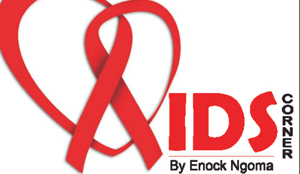 IN November 2010, the Government of the Republic of Zambia through the National HIV/AIDS/STI/TB Council (NAC) released the National AIDS Strategic Framework 2011 – 2015 (NASF).
IN November 2010, the Government of the Republic of Zambia through the National HIV/AIDS/STI/TB Council (NAC) released the National AIDS Strategic Framework 2011 – 2015 (NASF).
In his foreword in the NASF, then Health Minister Kapembwa Simbao said the Framework was the third in a series of such strategic frameworks and that given the urgency to stop new infections and the need to provide comprehensive and quality care and support, NASF was evidence and results based.
He said we have shifted our approach from business as usual to focusing on innovative interventions and programming that will lead to the achievement of specific results.
Mr Simbao said the NASF presents two major results. The first focuses on a reduction of new infections from 82,000 in 2009 to 40,000 in 2015.
The second result focuses on extending the lives of people living with HIV (PLHIV), and measures the increased percentage of PLHIV alive more than 36 months after initiation of ART.
In the executive summary of the document, I was particularly interested in the part where it said: the mainstreaming of gender is strategically important given the gender bias of the epidemic.
More women (16.1 per cent) than men (12.3 per cent) are living with HIV and AIDS.
Available evidence also indicates that women bear a heavier burden in care and support of PLHIV and orphans and vulnerable children (OVC).
To ensure a sustained gender-sensitive response, the NASF integrates a gender-based analysis of the epidemic drivers and other structural factors (gender inequality, poverty, income disparities) that are fuelling the epidemic into the planning and programming of the national response and monitoring and evaluation (M&E).
By mainstreaming human rights, the NASF promotes protection of basic rights especially of PLHIV, orphans, vulnerable children and other vulnerable groups including women, girls and people with disabilities.
A primary area of focus will be protection of stigma and discrimination, the right to privacy (protecting people from mandatory testing, confidentiality of information), the right to education and information, and access to quality services.
Under the heading Prevention of New HIV infections, the priority for Zambia is to reduce the rate of new infections by 50 per cent by 2015.
This will be achieved through the implementation of a series of interventions using the “combination prevention strategy” and focusing on prioritised epidemic drivers.
The focus is to reduce the risk of infection by implementing interventions that will address sexual behaviours, social norms, gender inequalities and poverty.
Additional interventions will focus on stigma and discrimination, low levels of education attainment, and gender based violence (GBV).
These interventions will be complemented by biomedical interventions such as male circumcision (MC), prevention of mother to child transmission (PMTCT), Post Exposure Prophylaxis (PEP), prevention of STIs and promotion of consistent and correct use of male and female condoms.
These are some of the important issues that are in the National AIDS Strategic Framework 2011 – 2015 and I thought it would be imperative that we remind ourselves because this is now 2015 and I have no doubt that the NAC will by the end of the year, give us some synopsis of some of the success stories arising from this Framework.
Last week, I was elated to hear the re-appointed Minister of Health announcing that Zambians travelling to South Africa and Botswana will no longer be required to produce yellow fever vaccination certificates.
This is as it should be because the World Health Organisation removed Zambia from the list of countries with the yellow fever threat a long time ago.
By demanding for yellow fever certificates from Zambians travelling to Botswana and South Africa, a negative message was being sent to other countries that Zambia has yellow fever when in fact not.
So the Government’s intervention is timely as it comes at a time when Zambia is trying to promote its tourism industry.
Which tourist can come to a country where there is an outbreak of yellow fever? Once again thanks to the Minister.
Travel to South Africa will now be a lot easier without carrying an extra and highly costly document other than the passport.
My appeal however, to the Minister is to extend this gesture to all other countries where they still demand for Zambians to produce yellow fever vaccination certificates.
For comments or if you have anything you would like to share pertaining to HIV/AIDS, TB or any other health issue, write to me on knoxngoma@gmail.com or text/call +260955883143







